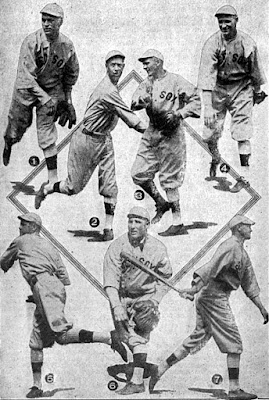The standard of Base Ball in the world series of 1918 between the Boston American League and Chicago National League clubs was excellent. In some essentials it was more than excellent, as it was a standard superior to that which had been accepted as excellent in the past. The batting was less powerful. The pitching was uniformly more effective. The fielding was well nigh perfect. There were but six errors recorded against the competing clubs in. six games, and of these six only one was charged against Boston.
Attendance, enthusiasm and, last of all, receipts, were less at this world series than at some of its predecessors and more than at others. The enthusiasm, however, was not so much less by comparison as was unwarrantedly asserted. Sane and sober judgment, borne out by facts, give argument for the belief that Base Ball in general did far better under prevailing conditions than there had been any reason to expect. Approximately 57,000 fewer spectators saw the games of 1918 than the total number who were spectators in 1917. That is less than 10,000 to a game.
This Image (or other media file) is in the public domain because its copyright has expired. This applies to the United States, where Works published prior to 1978 were copyright protected for a maximum of 75 years. See Circular 1 "COPYRIGHT BASICS" from the U.S. Copyright Office. Works published before 1924 are now in the public domain.















No comments:
Post a Comment